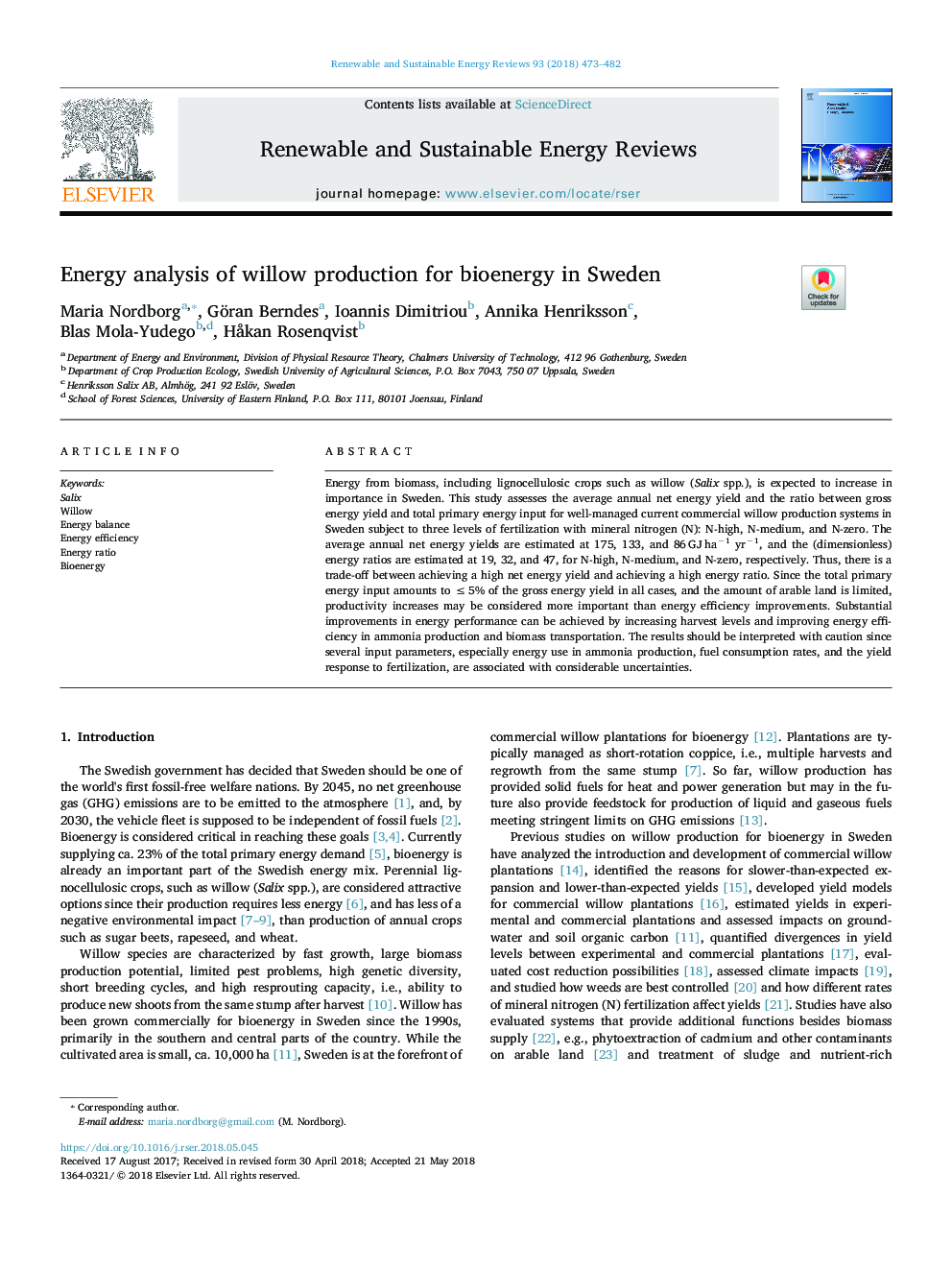| Article ID | Journal | Published Year | Pages | File Type |
|---|---|---|---|---|
| 8110734 | Renewable and Sustainable Energy Reviews | 2018 | 10 Pages |
Abstract
Energy from biomass, including lignocellulosic crops such as willow (Salix spp.), is expected to increase in importance in Sweden. This study assesses the average annual net energy yield and the ratio between gross energy yield and total primary energy input for well-managed current commercial willow production systems in Sweden subject to three levels of fertilization with mineral nitrogen (N): N-high, N-medium, and N-zero. The average annual net energy yields are estimated at 175, 133, and 86â¯GJâ¯haâ1 yrâ1, and the (dimensionless) energy ratios are estimated at 19, 32, and 47, for N-high, N-medium, and N-zero, respectively. Thus, there is a trade-off between achieving a high net energy yield and achieving a high energy ratio. Since the total primary energy input amounts to â¤â¯5% of the gross energy yield in all cases, and the amount of arable land is limited, productivity increases may be considered more important than energy efficiency improvements. Substantial improvements in energy performance can be achieved by increasing harvest levels and improving energy efficiency in ammonia production and biomass transportation. The results should be interpreted with caution since several input parameters, especially energy use in ammonia production, fuel consumption rates, and the yield response to fertilization, are associated with considerable uncertainties.
Related Topics
Physical Sciences and Engineering
Energy
Renewable Energy, Sustainability and the Environment
Authors
Maria Nordborg, Göran Berndes, Ioannis Dimitriou, Annika Henriksson, Blas Mola-Yudego, HÃ¥kan Rosenqvist,
